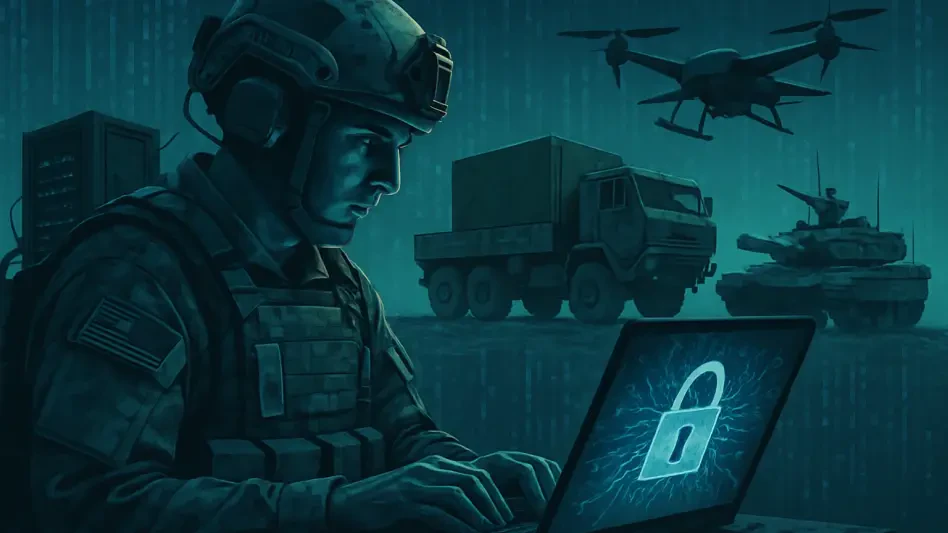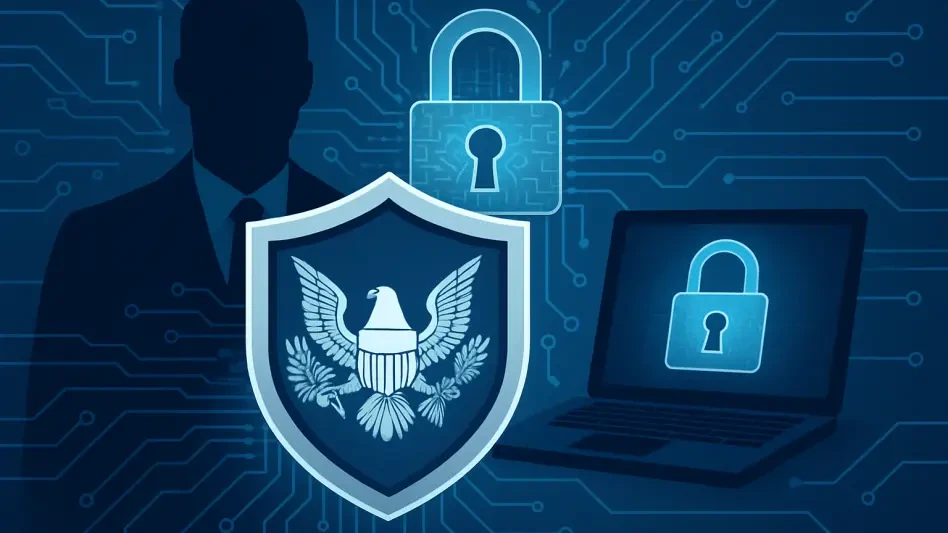In an era where digital battlegrounds are as critical as physical ones, the Military Cyber Weapons Market stands at the forefront of modern defense strategies, with projections estimating its value to reach an astonishing $41.49 billion by 2032, reflecting a robust compound annual growth rate (CAGR) of 9.31% from 2024 onward. This remarkable growth highlights the escalating importance of cyber operations in warfare, where the ability to dominate the digital realm often dictates strategic success over adversaries. As nations face an unprecedented rise in cyber threats—from state-sponsored attacks to sophisticated hacking attempts—the demand for advanced tools to both protect and disrupt in the virtual space has surged to new heights. Far beyond mere technology, this market represents a fundamental shift in how national security is defined and defended in an increasingly interconnected world. Cyber weapons, encompassing everything from malware to intricate network penetration systems, target data and infrastructure to achieve military objectives without the need for conventional combat. Their role in safeguarding critical systems and outmaneuvering enemies in a borderless domain cannot be overstated. This article explores the driving forces behind this dynamic sector, delving into the technological innovations, strategic imperatives, and collaborative efforts shaping its trajectory. The focus is on understanding why cyber warfare has become a cornerstone of defense and how it continues to evolve in response to global challenges.
Forces Fueling Market Expansion
The rapid expansion of the Military Cyber Weapons Market is primarily driven by the alarming increase in cyber threats that nations face daily, ranging from state-orchestrated espionage to devastating data breaches targeting critical infrastructure. These incidents have pushed governments to prioritize the development of robust cyber arsenals as a means of defense and deterrence. Geopolitical tensions further amplify this urgency, as cyberattacks have emerged as powerful tools for exerting influence or destabilizing adversaries without resorting to direct military engagement. The market’s growth trajectory mirrors a broader transformation in military doctrine, where digital warfare is elevated to the same level of importance as traditional physical combat. Nations recognize that failing to secure cyberspace can undermine even the most formidable conventional forces, making investment in cyber capabilities not just a choice but a necessity. This shift is evident in the substantial budgets allocated to cyber defense units and the strategic integration of digital tools into national security frameworks, reflecting a global consensus on the critical nature of this domain.
Another dimension propelling the market forward is the pervasive digitization of military operations, which, while enhancing efficiency, also exposes vulnerabilities that adversaries are quick to exploit. Communication networks, command systems, and logistical operations now rely heavily on digital infrastructure, creating potential entry points for threats like Advanced Persistent Threats (APTs) and ransomware. Cyber weapons address these risks by offering both protective mechanisms to shield sensitive systems and offensive capabilities to disrupt enemy operations before they can inflict harm. The strategic importance of these tools lies in their ability to prevent catastrophic breaches that could compromise entire defense networks. As military reliance on interconnected technologies deepens, the need for sophisticated cyber solutions becomes more pressing, ensuring that this market remains a focal point for innovation and investment in the years ahead.
Technological Frontiers in Cyber Warfare
At the core of the Military Cyber Weapons Market lies a wave of technological innovation that is redefining the capabilities of modern militaries, with Artificial Intelligence (AI) and machine learning leading the charge. These technologies enable real-time threat detection and automated responses, empowering defense systems to counter sophisticated attacks with unprecedented speed and accuracy. AI-driven cyber weapons can operate autonomously, identifying vulnerabilities in enemy networks or neutralizing threats without human intervention, thereby enhancing operational efficiency. This shift toward automation not only reduces response times but also allows military personnel to focus on strategic decision-making rather than tactical execution. The integration of such advanced systems signals a future where cyber warfare is increasingly proactive, capable of anticipating and mitigating risks before they escalate into full-scale crises.
Equally transformative are emerging technologies like cloud computing and quantum computing, which offer scalable and secure platforms for cyber operations while promising to revolutionize encryption and data protection. Cloud-based systems provide the flexibility to deploy cyber defenses across vast networks, ensuring resilience against distributed attacks. Meanwhile, quantum computing holds the potential to create unbreakable encryption methods, giving militaries a significant edge in securing sensitive information. These advancements enhance both defensive postures and offensive strategies, enabling precise strikes against adversary systems while safeguarding national assets. The continuous evolution of such technologies underscores their pivotal role in shaping the market’s future, as nations race to adopt cutting-edge tools that keep them ahead in the ever-changing landscape of digital conflict.
Diverse Applications in Military Strategy
The Military Cyber Weapons Market encompasses a wide array of applications, striking a critical balance between offensive and defensive needs to address the multifaceted challenges of digital warfare. Offensive cyber weapons are designed to penetrate and disable enemy systems, disrupting communications or crippling infrastructure to gain strategic advantages without physical confrontation. On the other hand, defensive tools focus on fortifying military networks against intrusions, ensuring that vital operations remain uninterrupted in the face of relentless cyberattacks. Both aspects are indispensable in a landscape where a single breach can have far-reaching consequences for national security. The dual focus reflects an understanding that winning in cyberspace requires not only the ability to strike but also the resilience to withstand sophisticated assaults from determined adversaries.
Beyond offense and defense, reconnaissance and surveillance tools form a crucial component of the cyber arsenal, enabling militaries to gather actionable intelligence that informs broader strategies. These tools are applied across diverse domains such as network security, electronic warfare, and the protection of critical infrastructure like power grids and transportation systems. Their versatility ensures that militaries are equipped to handle a spectrum of scenarios, from preempting cyber espionage to safeguarding essential services during times of conflict. This comprehensive approach highlights the adaptability of cyber weapons in meeting varied operational demands, positioning them as integral to modern military planning. As threats evolve, the ability to pivot between different applications will remain a key factor in maintaining a robust defense posture in the digital realm.
Collaborative Dynamics and Key Contributors
A defining feature of the Military Cyber Weapons Market is the collaborative ecosystem that underpins its development, with governments forging strategic partnerships with leading defense contractors to drive progress. Companies such as Lockheed Martin, Northrop Grumman, and Raytheon Technologies are at the forefront, channeling significant resources into research and development to create tailored cyber solutions that meet military specifications. These collaborations ensure that cyber weapons remain adaptive, capable of countering emerging threats as they arise. By aligning with defense agencies, these industry giants facilitate the rapid integration of advanced technologies into national security frameworks, ensuring that militaries are equipped with state-of-the-art tools to navigate the complexities of digital warfare.
Complementing the efforts of established players are numerous cybersecurity startups that bring fresh perspectives and niche innovations to the table, enhancing the market’s competitive landscape. These smaller entities often specialize in cutting-edge areas like AI-powered threat intelligence or next-generation malware detection, filling gaps that larger contractors might overlook. Their contributions foster a dynamic environment where innovation thrives through a blend of scale and agility. This synergy between major corporations and emerging firms, alongside governmental support, creates a robust network that continuously pushes the boundaries of what cyber weapons can achieve. Such cooperation is vital for addressing the intricate and evolving security challenges that define the current global landscape, ensuring a collective strength in the face of digital threats.
Global Outlook and Future Pathways
Looking ahead, the Military Cyber Weapons Market is poised for sustained growth as digital warfare becomes increasingly central to military strategies across the globe, with nations prioritizing cyber capabilities to maintain strategic edges. The projected valuation of $41.49 billion by 2032 reflects a shared recognition of cyberspace as a critical theater of conflict. Investments in research and development will be paramount to tackle new and emerging threats, while international partnerships will play an essential role in building global cyber resilience. Ethical and regulatory considerations will also shape deployment strategies, ensuring that the use of cyber weapons adheres to international norms and avoids unintended escalations. Balancing innovation with responsibility will define the market’s path forward, cementing cyber tools as indispensable in modern defense.
Emerging opportunities in the market include the development of next-generation cyber defense platforms that leverage cloud computing for scalability and real-time analytics for threat prediction. Additionally, the potential integration of quantum computing could transform encryption and decryption processes, offering unparalleled advantages in securing communications and penetrating enemy defenses. As militaries adapt to a shifting threat landscape, the demand for innovative and flexible cyber solutions will continue to propel market expansion. This focus on forward-thinking technologies and collaborative efforts signals a future where cyber warfare capabilities are not just reactive but anticipatory, equipping nations to stay ahead of adversaries in a domain where the stakes are perpetually high.








